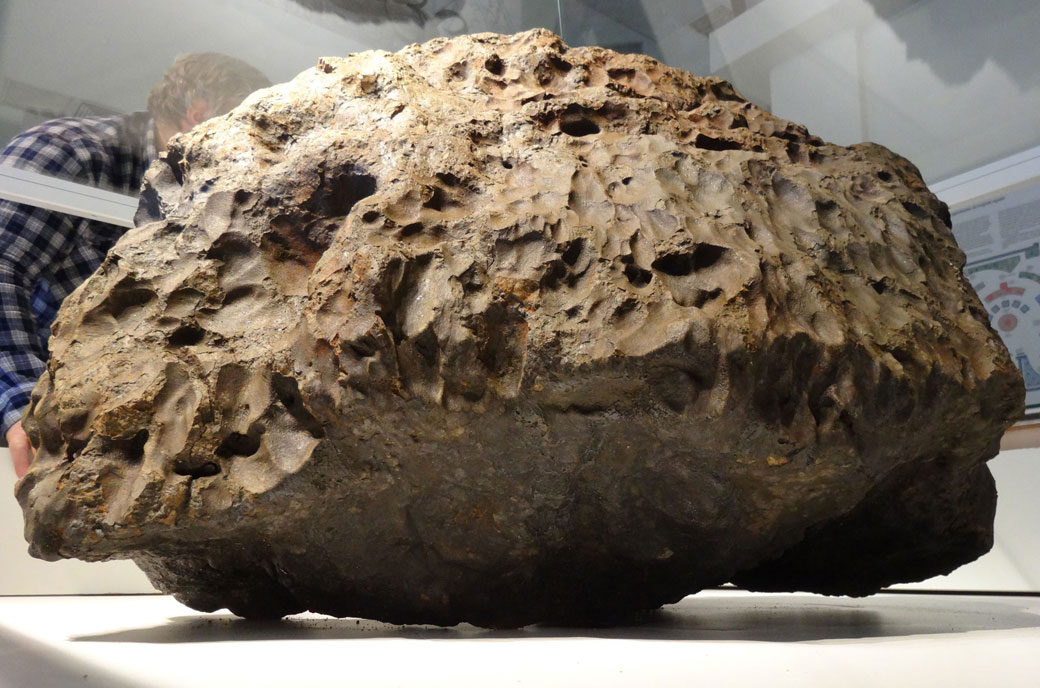TORONTO – The first study on the Chelyabinsk meteor, which lit up the sky over parts of Russia last February, has found that the meteorite was likely 4.4 million years old and entered Earth’s atmosphere at just over 19 km/s, faster than previously estimated.

A 59-person team from nine countries visited 50 towns in the surrounding area, collecting samples and interviewing witnesses. This is the first complete study of the event.
“Our goal was to understand all circumstances that resulted in the damaging shock wave that sent over 1,200 people to hospitals in the Chelyabinsk Oblast area that day,” said NASA Ames and SETI Institute meteor astronomer Peter Jenniskens, one of the lead researchers.
In the early morning of February 15, as people headed to work, a bright streak tore across the sky over Chelyabinsk. Dashboard cameras captured the extremely bright meteor – at one point brighter than the sun. The meteor left behind a long trail and parts of it seemed to break off.
Moments later, as people stood by windows or went outside to see what had caused the bright flash, shockwaves caused by air moving ahead of the meteor, exploded across the area, throwing people to the ground, shattering windows, and damaging buildings.
The explosion was equivalent to about 600 thousand tons of TNT.
Had it exploded over an urban area, the results could have been far more catastrophic.
“If humanity does not want to go the way of the dinosaurs, we need to study an event like this in detail,” said Qing-Zhu Yin, professor in the Department of Earth and Planetary Sciences at UC Davis.
The team estimates that the meteor’s peak brightness occurred roughly 30 km above the surface, as it exploded. It was at this point when some people experienced sunburn-like burns.
After the explosion, most of the meteor became dust. About 4,000 to 6,000 km – less than 0.05 percent – of it fell to the ground as meteorites. (Meteorites – as opposed to meteors – are pieces of a meteor that make it to Earth.)
Read more: Chelyabinsk meteorite sent plume around the world
The largest piece was extracted from Lake Chebarkul in October.
Many consider the Chelyabinsk event to be a wake-up call and believe that more funding must be put toward asteroid tracking, specifically with regard to potentially hazardous asteroids (PHAs) that could possibly pose a danger to the planet.
(Asteroids are small solar system bodies that orbit the sun. Meteoroids – smaller chunks of rock and debris in space – become meteors if they streak through Earth’s atmosphere and meteorites once they reach the surface. If an asteroid reaches Earth, it too, is called a meteorite.)
NASA’s Near Earth Object Program estimates that there are currently 1,437 PHAs. That doesn’t mean, however, that we are doomed by these asteroids. It means that current estimates place these asteroids close to Earth, but further research and tracking is needed to ensure that they will not ever pose a threat to our planet.
The Chelyabinsk meteorite is part of a family of space rock called ordinary chondrites, a type of space debris left over from the formation of our solar system. The scientists estimate its age to be 4.4 billion years old.
The scientists also estimate that it went through an earlier shockwave about 115 million years after the formation of the solar system, 4.7 billion years ago.
The findings will be published Nov. 7 in the journal Science.



Comments